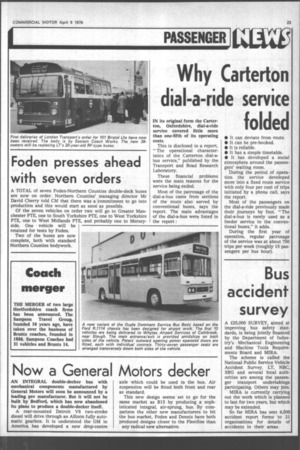Why Carterton dial-a-ride service folded
Page 25

If you've noticed an error in this article please click here to report it so we can fix it.
IN its original form the Carterton, Oxfordshire, dial-a-ride service covered little more than one-fifth of its operating costs.
This is disclosed in a report, " The operational characteristics of the Carterton dial-abus service," published by the Transport and Road Research Laboratory.
These financial problems were the main reasons for the service being ended.
Most of the patronage of the dial-a-bus came from sections of the route also served by conventional buses, says the report. The main advantages of the dial-a-bus were listed in the report : • It can deviate from route.
• It can be pre-booked.
• It is reliable.
• It has a simple timetable.
• It has developed a social atmosphere around the passengers' waiting room.
During the period of operation the service developed more into a fixed route service with only four per cent of trips initiated by a phone call, says the report.
Most of the passengers on the dial-a-ride previously made their journeys by foot. " The dial-a-bus is rarely used as a feeder service to the conventional buses," it adds.
During the first year of operation, regular patronage of the service was at about 750 trips per week (roughly 15 passengers per bus hour).




























































































































